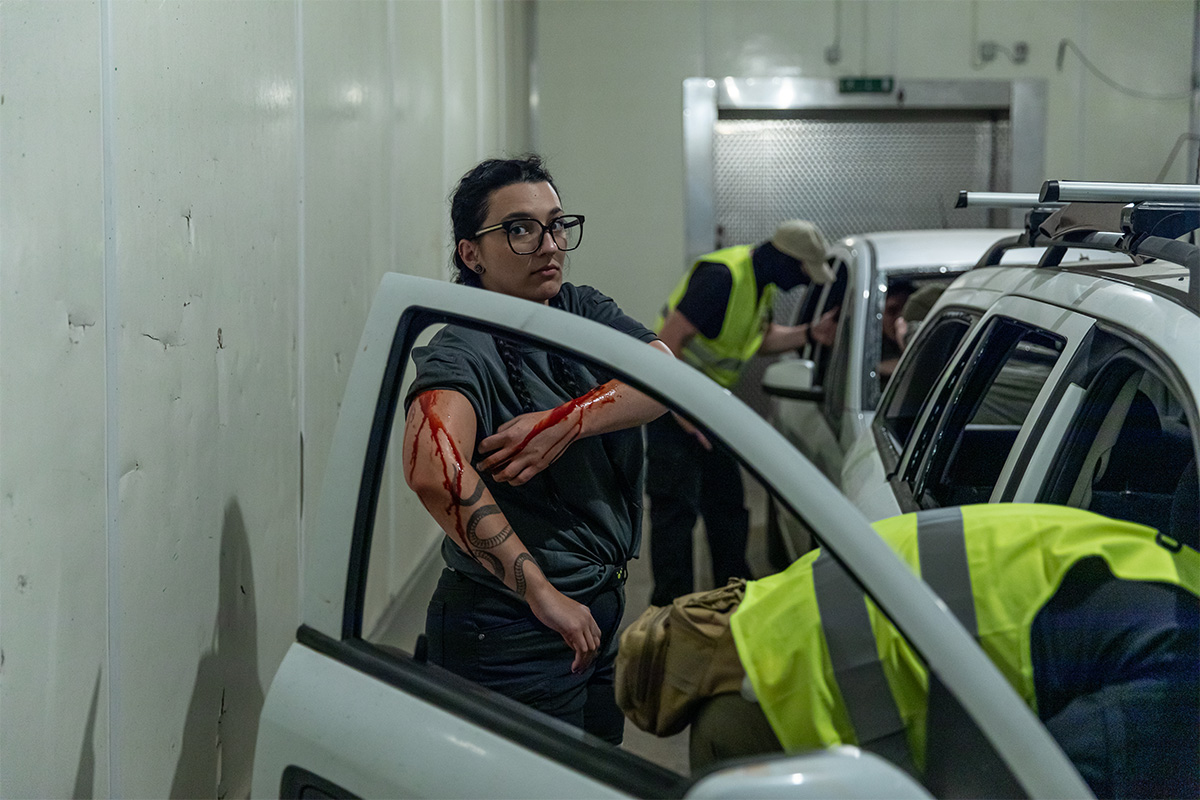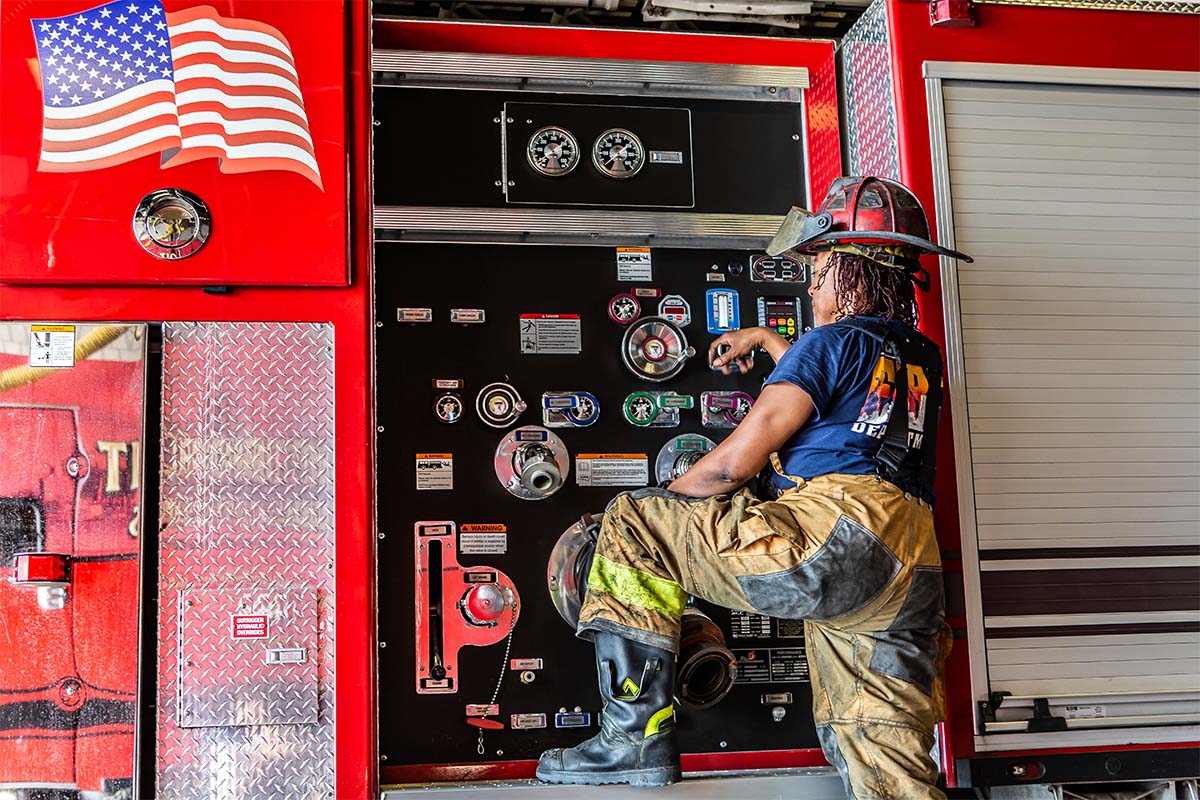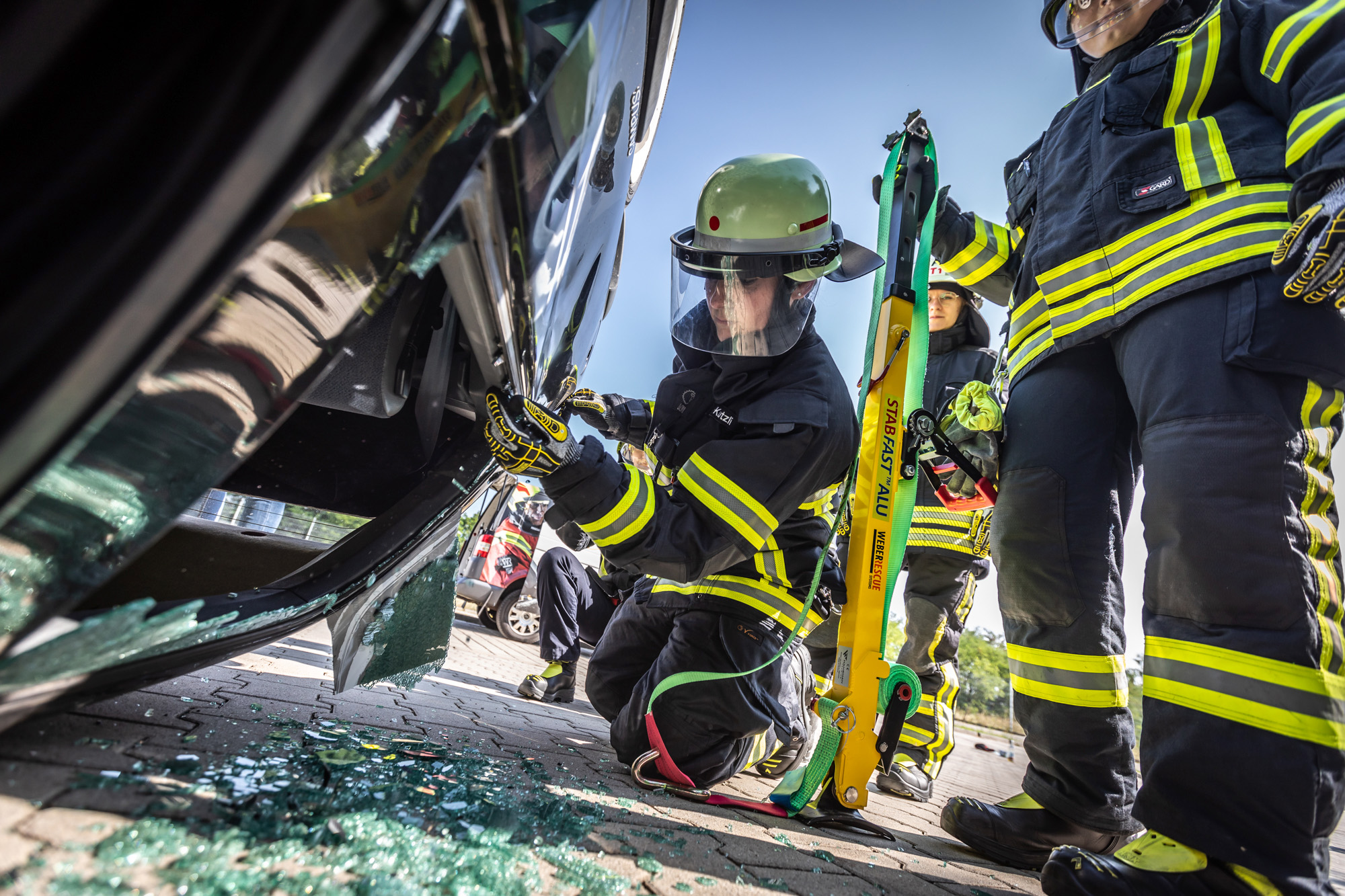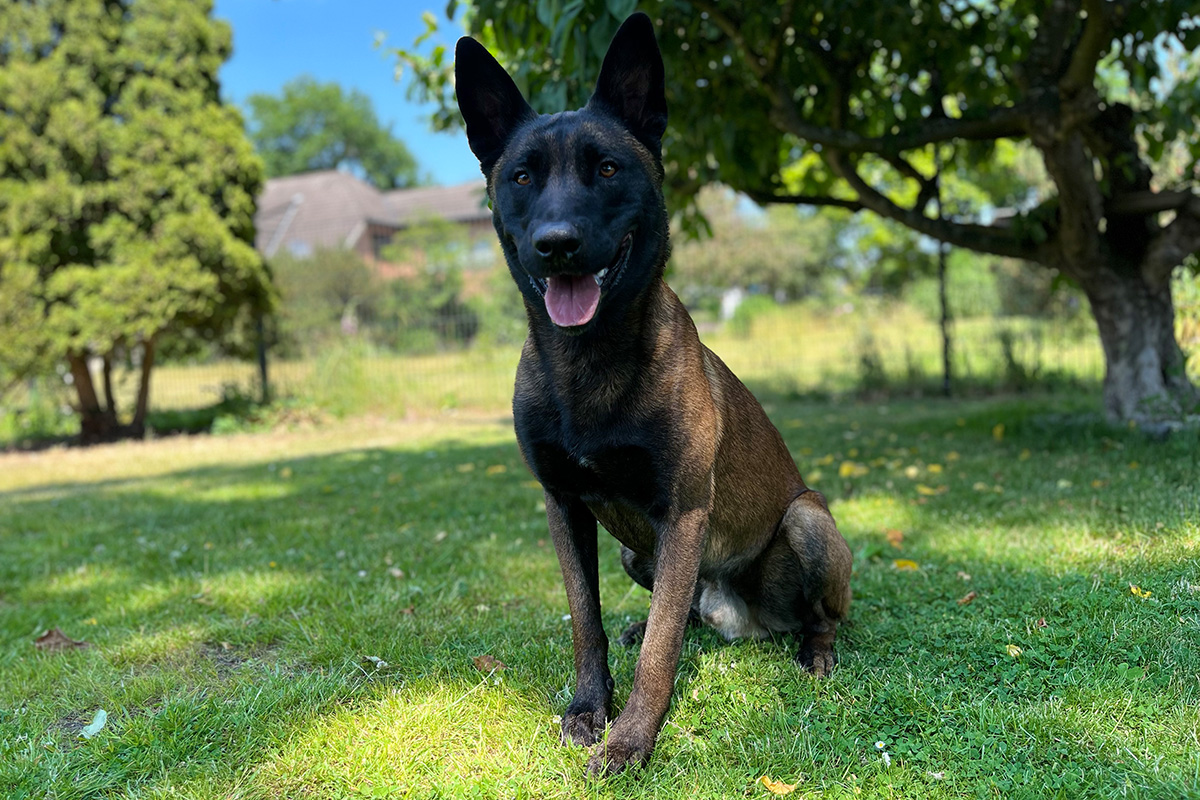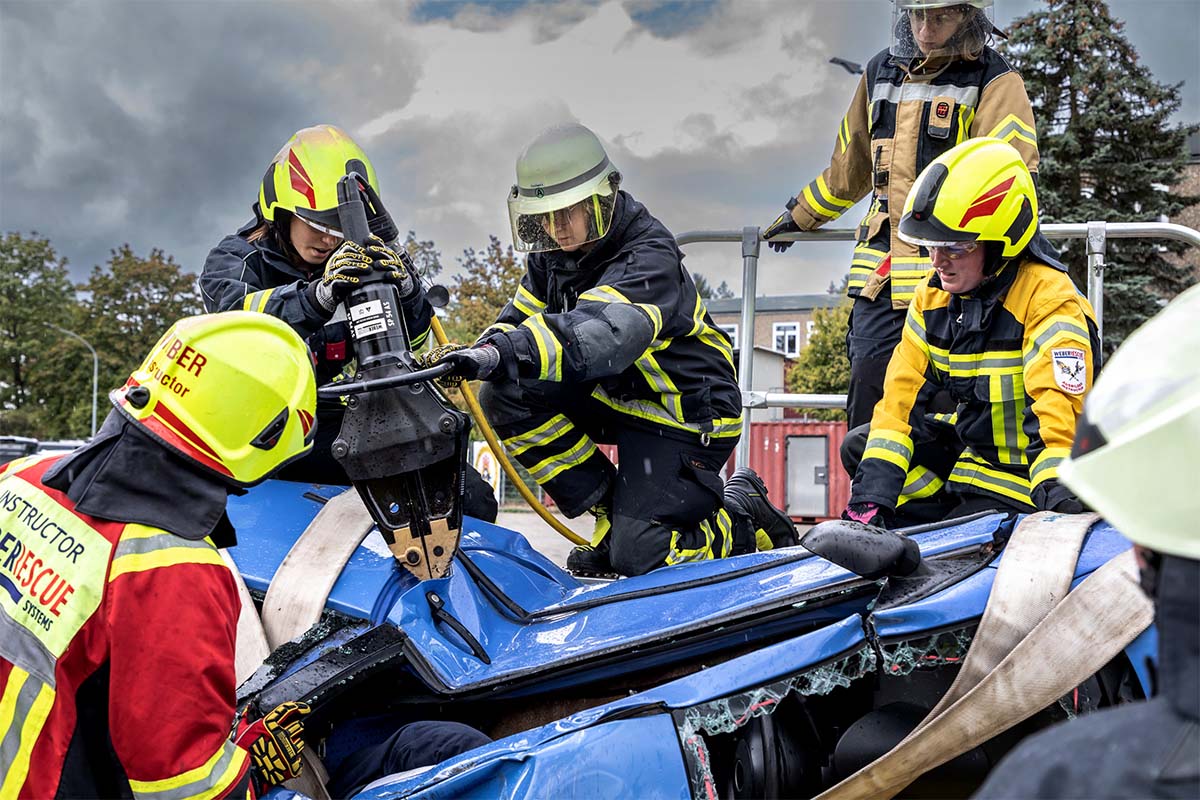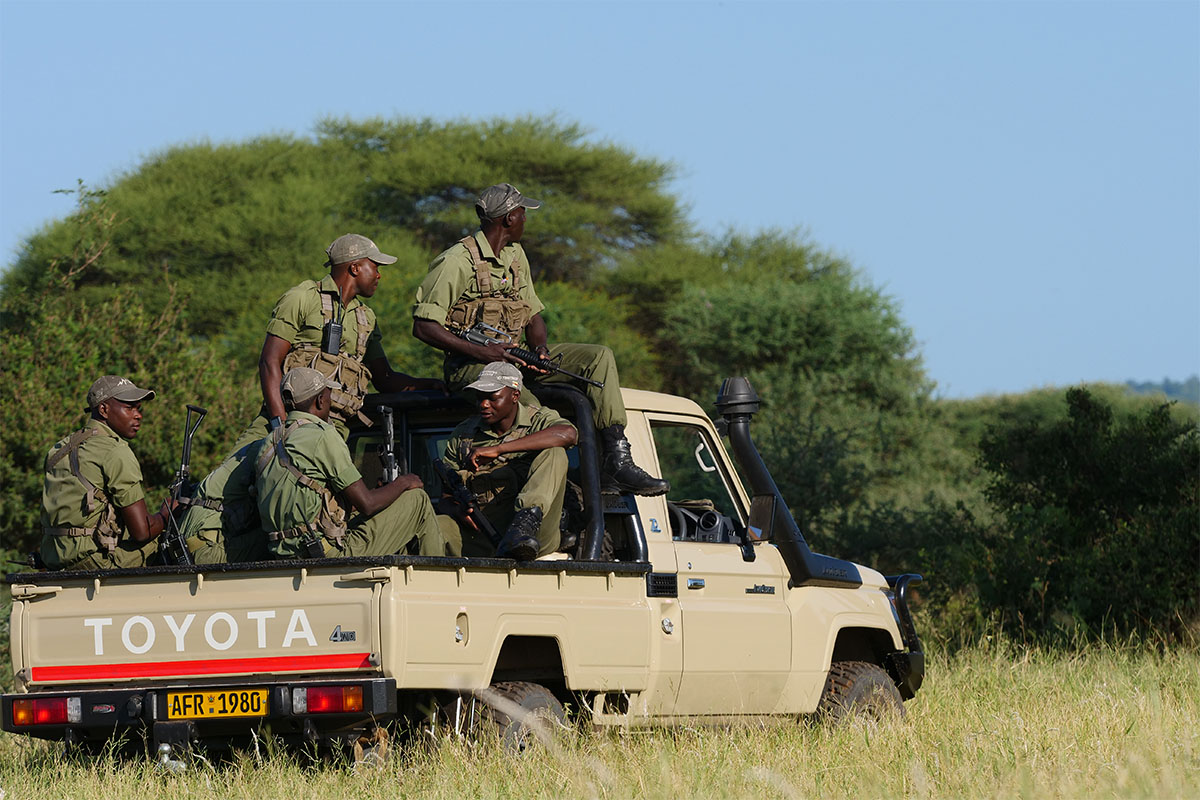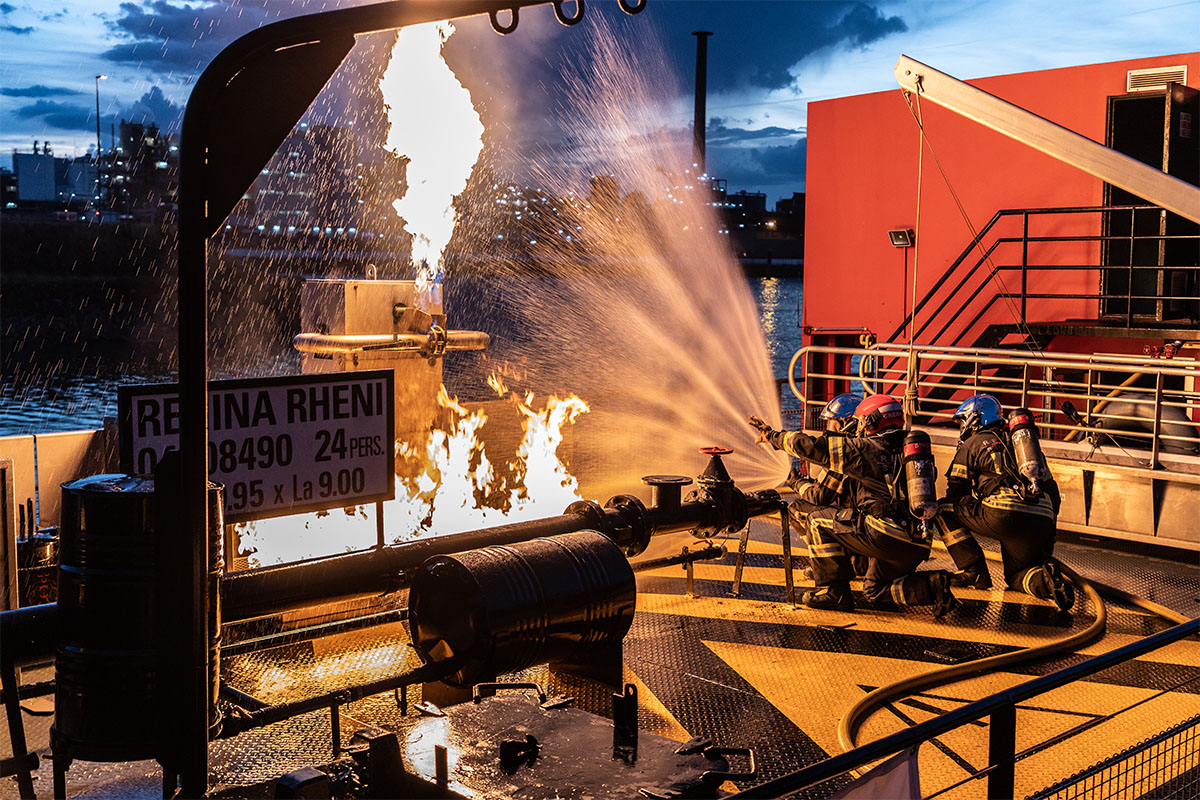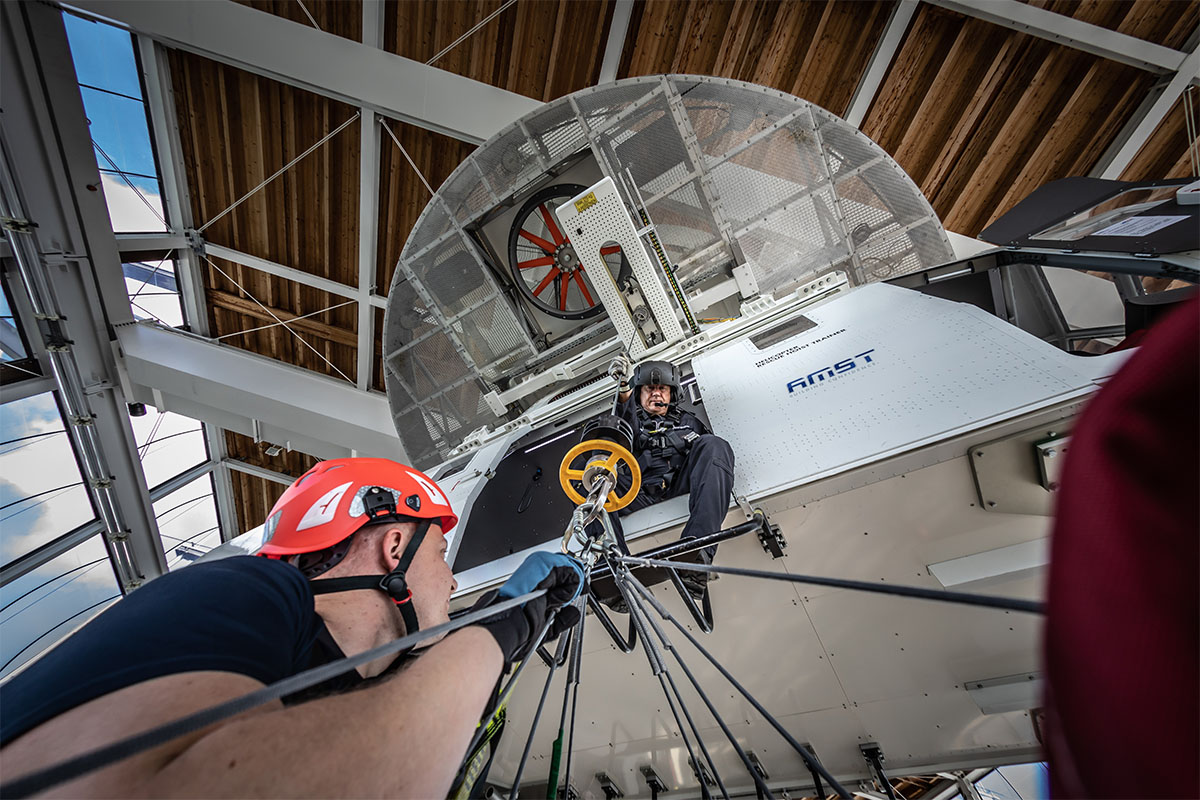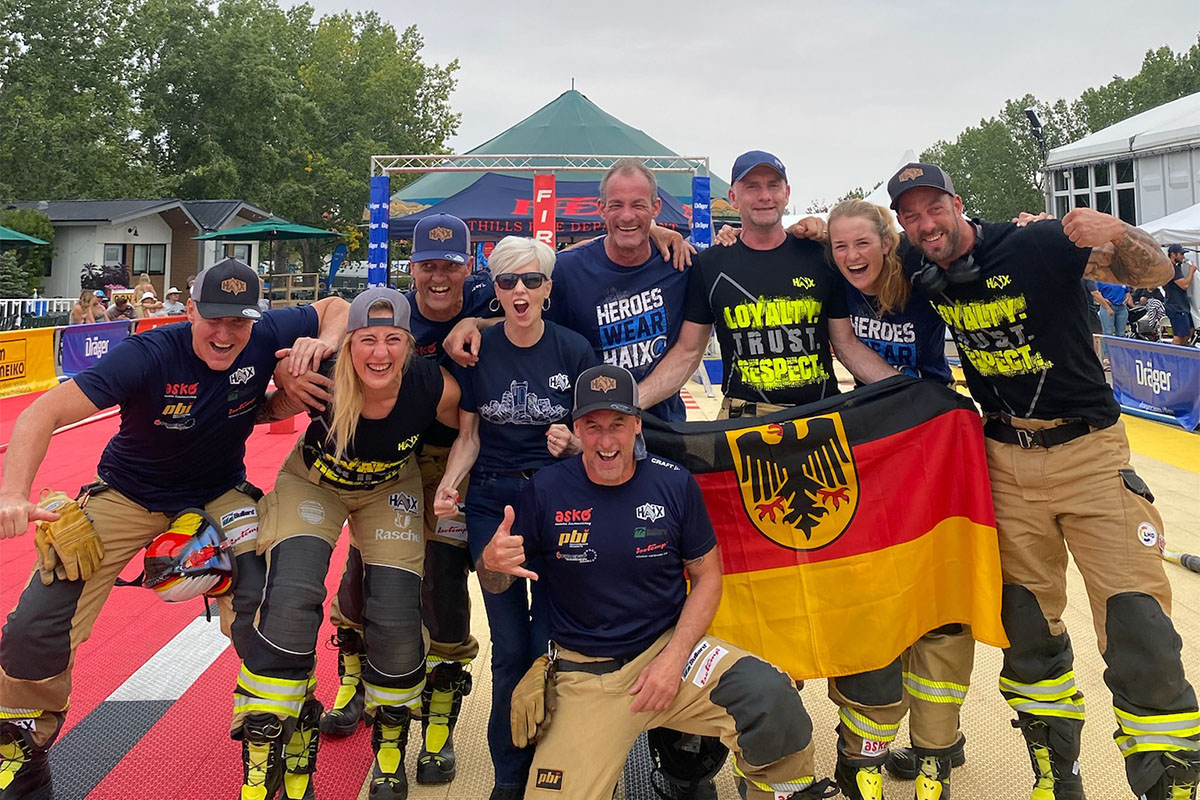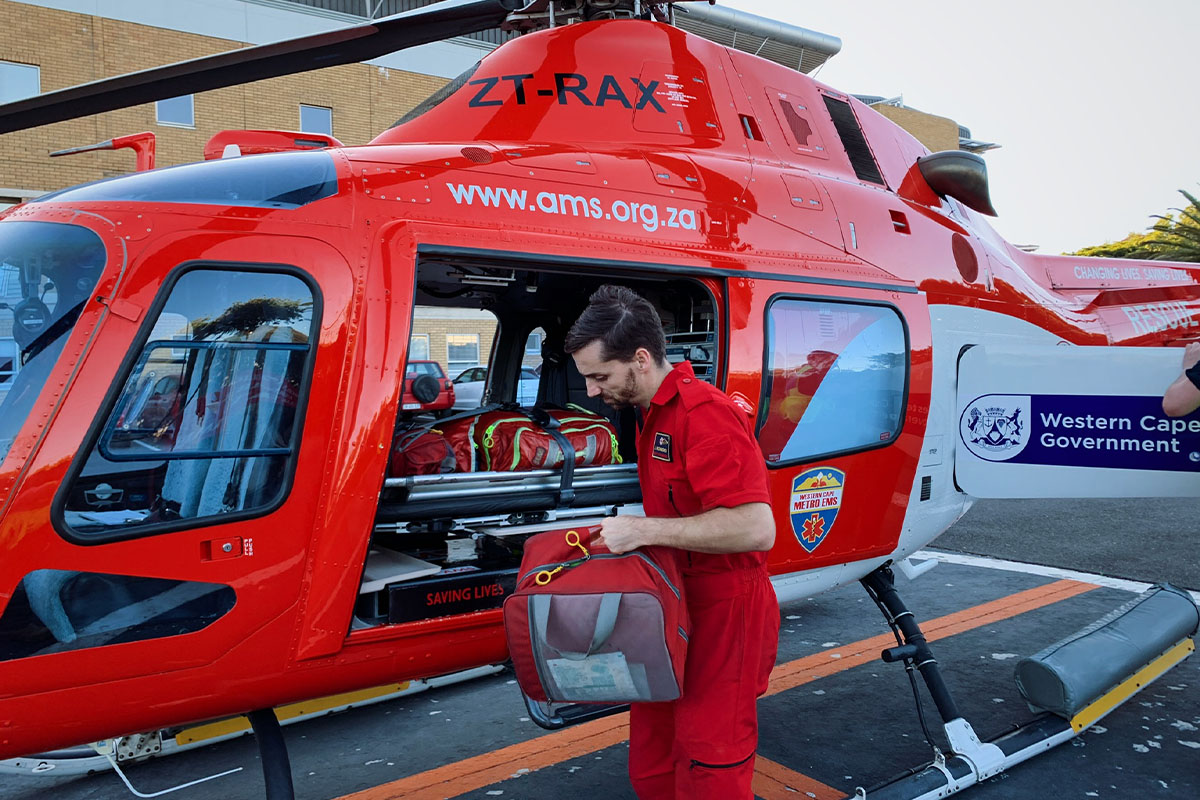Disasters happen – thankfully, these ones are only simulated. Marc Zierden demonstrates how missions in extreme situations work.
It’s dark, there’s no room, and everything is too loud. “Ow, my leg! I’m bleeding! Help me!” Two cars have crashed into each other. Six injured people are screaming or unconscious. “Help me already! I’m bleeding to death!” A first responder is kneeling over an unresponsive woman, while a man is screaming in another corner. “Come and help me! Please.” The first-aid worker casts a brief glance over the scene, which is crammed and chaotic. He cannot leave the woman, also bleeding heavily, to help the other person.
Thankfully, this particular horrific scenario is merely a simulation. The victims and responders are both participants in a TECC course: Tactical Emergency Casualty Care. They are here to learn how to stay calm during chaotic incidents with many injured people, keep on top of the situation, take a structured approach, and save human lives.
By specialists for everyone
“Helping people is such an awesome feeling.” Marc Zierden is standing in front of the ten course participants. It’s time for a theory lesson. When is it safe to help someone? In what situations do I need to consider my own safety first? His students are hanging on to his every word. Among those wishing to learn advanced first aid are paramedics, police officers, and members of the general public.
Everyone is sitting inside a US Army medic tent in the large training facility. Just 16 years ago, it still housed a poultry slaughterhouse. Today, the halls have an area for practical training, a classroom, and an urban practice course. “We built all this up by ourselves,” explained Marc. The facility belongs to the Airborne Medical Group (AirMeG) and Operative Fähigkeiten GmbH. Their team consists of specialists, some of whom are active members of the military and police force, and wish to remain anonymous.
The AirMeG’s TECC courses are booked solid well into the next year. Groups are deliberately kept compact. “This allows us to pay attention to every single participant. We can see who does what,” explained Marc. Often, the participants are divided into further groups – one of four, one of six – and allocated two to three instructors each. This approach ensures that no mistake goes unnoticed, which is very important. Mistakes during training are fine – in real life, not so much.

A matter of seconds
The participants have a tough program ahead of themselves. After the daily exercise and theory part of the day, they head for the “skill stations.” Working with simulators or their team partners, the women and men on the program learn and practice specific skills: Applying a tourniquet, using a compression bandage in the groin or armpit, packing a wound, venepuncture, and intubation. Of course, they also revise the basics, from the recovery position to cardiac massage during resuscitation. How do you use a defibrillator? What do you need to know when helping small children or babies?
The instructors want to furnish their students with more than just manual skills. “Underarm dressings are usually very uncomfortable for the patient, as are neck bandages. Tell the person what you are doing and calm them down a little.” The course places great importance on communicating with injured people and bystanders. Situational awareness is key. After a traffic accident, is there any danger of another car hitting the site of the crash? After a knife attack, could the suspect still be in the area? Occasionally, the instructors don a red head torch and position themselves somewhere in the room. Once a participant spots the red light, they shout out: “Criminal!”. The faster, the better.

The same goes for applying the tourniquet. Every now and then, the instructors call out instructions such as: “Tourniquet, left leg.” At that point, the students have mere seconds to stop an imaginary severe bleed on their own body. “You’ve got to be fast! In a real-life situation, you won’t have much time until you lose consciousness.” Even though the instructors and participants are always in high spirits, joking around with each other, there is no room for doubt: This is about serious situations, matters of life and death. Everyone does well at the theoretical parts and the simulations, but when the pressure is on, some begin to falter.
Dealing with extreme situations
And pressure is certain on the last day: The scenarios Marc and his team have prepared for their group are no joke. The course opened with a simulated car crash to gage the participants’ existing skills. Toward the end, things get a lot more intense. While half of the learners are distributed across cars with bloody wounds painted onto their faces, the others are given the role of helpers. All hell breaks loose in the confined space: It’s noisy, people are screaming, a car radio is blasting music. The first responders and the acting victims give it their all. Suddenly, someone stops breathing. Another person becomes aggressive towards the rescuers, challenging them: “Do you even know what you’re doing there?”
The second scenario is even more demanding. It involves a domestic knife attack. Both cases are complicated by there being more victims than there are helpers. Who needs help most urgently? Who can still walk and get themselves to safety? These decisions have to be made within seconds while people are screaming and shouting. After completing the two scenarios, the participants discuss how they handled the situations. They are not satisfied: Some things did not go as planned, and it was not obvious who was in charge during the emergencies. “We all make mistakes,” reassures Marc. “And we learn from them, too.” The participants do not have much time to collect themselves after the feedback session, as the final scenario is already waiting.

This time, Marc is joining the helpers to support them here and there. His other team members are playing victims and police officers. The situation: There has been a shootout inside a building. Due to the inherent danger of the situation, everyone has to get to safety first. Once the situation is resolved, the work begins. Some injured people are screaming, some are gasping for air. Nobody really knows what has happened. There are deep wounds that need treating, with some located in body parts that are hard to access, like the torso. The injured are in shock. They must be protected against hypothermia and prepared for transport. This last scenario pushes the students to their limits once again. It is only over when the rescue service arrives.

EXCURSION K9: AID FOR ANIMALS
A dog is a man’s best friend. In the police and military, their handlers appreciate them as much as their human comrades. This makes first aid for dogs an important skill: Many of the steps used for humans don’t quite work on them.
That’s what Eddy is here for. Eddy is not real: The dark brown dog is a dummy with a pulse, a bleeding wound, and an inbuilt speaker through which it barks. Marc uses Eddy to demonstrate how to approach an injured dog. “The very first thing you need to do is keep the dog from biting.” This can involve a muzzle or wrapping a bandage around its snout. “You can’t kneel down next to a working dog with an injury. It won’t be able to tell friend from foe,” explains Marc.
He goes on to teach the course participants about treating wounds, stopping bleeding, and helping animals that are struggling to breathe. Not every move that would help a human can be used on a dog. Some handlers look shocked. Marc recalls a simulation he ran with a group of professional emergency responders. “The police officers had tears in their eyes when they saw just how much they didn’t know.” Being unable to help your own dog in an emergency due to a lack of fundamental knowledge is a nightmare for any dog owner.
